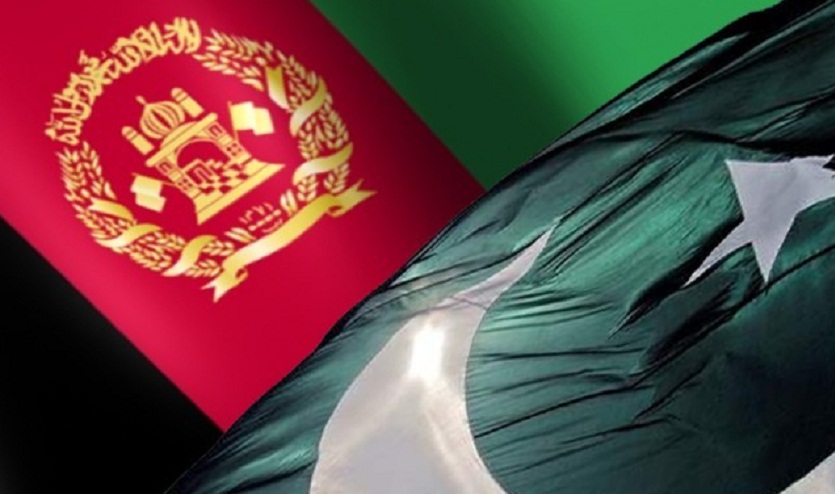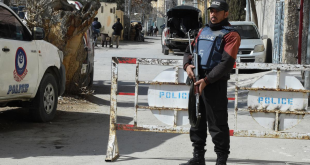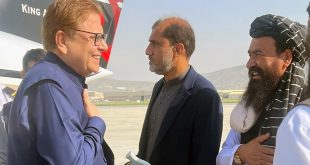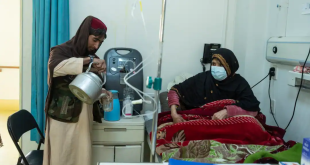By Ajmal Rahimi
Contents:
Abstract
Background
Current situation
Opportunities
Impediments
Conclusion
Graphs:
The bilateral trade Afghanistan-Pakistan (Millions US$)
Imports
Abstract:
Afghanistan is a landlocked country which is heavily dependent on neighboring countries for having trade relations and access to international markets, but still it is linked through the port of Karachi for majority of its import and export. In October 2010 both the countries signed a new transit deal, although the agreement allows the free passage of goods via this transit route, Afghan traders’ aim that despite an agreement designed to help them move freight through Pakistan, consignment of goods for import and export are still being held up in the country.
Pakistan is deliberately using transit route to pressurize Afghanistan, and being the most concerning point for Pakistan is the extendibility of Afghanistan–India trade, economic and political cooperation. In the present situation in view of downward status of trade and economic development in Afghanistan, it has been a good market of Pakistani products ranging from food items to light machinery and engineering goods. Afghanistan with a light range of domestic products which mostly dependsto augment the interior demand from the neighboring countries, especially Pakistan, either Afghanistan is keen to promote an alternative trade route to India that bypass Pakistan through Iran Chabahar port. The proposed route will pass through Iran the Persian Gulf and the Arabian Sea. So far this study is going to cover the substantial aspect of the trade relation between the two countries, including the background of trade relations, impediments, opportunities and present trade situation, influencing points and Afghanistan’s alternative trade partners. This study will also focus on the political issues which has the biggest impact on the trade relations between the countries, which most of the times it leads to unfavorable trade relations among the two countries.
Background:
After the Taliban government was overthrown, Hamid Karzai, became the head of interim government, he focused more to extend the economic and trade relation with Pakistan, the trade relations were there from last six decades, but the exact and reliable data about the countries trade relevance is not available, the trade volume between Pakistan and Afghanistan rose from $20 million in 2002 to over $700 million in May 2004. The particular trade relation got an increasing point from the year 2001, only a decline has been witnessed in the year 2006-2007 due to some reasons. Over the years balance of trade was always in favor of Pakistan, and Afghanistan was rolling as a consumer country, the bilateral trade has risen up to US $2509 million in the year 2010-2011 which the positivity of trade balance is always beneficial to the Pakistan. Afghanistan total international trade in 2016-17 financial years stood at just over $7 billion, out of which some $ 6.5 billion are Afghanistan’s imports while exports are around $596 million. During this period, only three countries – namely Iran, Pakistan, and China – contributed around half of Afghanistan’s total imports, each exporting goods worth more than $1 billion to the country. But what president Mohammad Ashraf Ghani and his team have been doing consistently over the past three years of the National Unity Government which has to look for alternatives and means that enhance their country’s trade with India, particularly Iran, china and Central Asian republics in addition to other neighbors. Ironically, the most striking part of it is that Mohammad Ashraf Ghani was threatening – and now has implemented this threat is to block Pakistan access to Central Asia via Afghanistan.
Current situation:
Afghan and Pakistani authorities claimed that trade relations have decreased in last three years, trade challenges between the two countries will continue. According to the statistics, last year’s trade value between the two countries dropped by $1 billion USD to $1.5 billion USD. In 2015 it was $2.5 billion USD. The commerce ministry of Pakistan admitted that frequent closures of the Pak-Afghan border had also contributed to the steady decline in exports to Afghanistan. Another reason was the diversion of Afghan trade to Iran.
President Mohammad Ashraf Ghani tried to restrict Pakistan politically and economically, the observations over the years reveal that Pakistan always get benefited through trade relations with Afghanistan. President Ghani is focusing more on alternatives trade partners including India, Iran and Central Asian countries. Still the effort is here to reduce trade with Pakistan. President Ghani has said that his country will not be a part of the China-Pakistan-Economic-Corridor, unless it has given access to Pakistan’s Wagah and Attari border to reach Indian market.
Opportunities:
Modern Afghanistan’s vision for economic and trade integration, connectivity to international market and expanding the trade relations with rest of the world specifically the regional countries, the power and energy cooperation between Central Asia and South Asia have direct impact on both Afghanistan and Pakistan economic development. Despite the biggest energy and power projects TUTAP and TAPI which both the countries are a part of it, hopefully is an optimizing point for countries trade and political relations, there will be a large pay off if Pakistan, Afghanistan and the Central Asian Republics consider the rapid development of land based system of transit and commerce. This has much greater growth potential than the sea transport to access distant places, the trade agreement APTTA allows both the countries to use their territory and maintain linkage between South Asia and Central Asia, perhaps APTTA is more favoring Pakistan trade compare to Afghanistan. A future policy dialogue may benefit both the countries in determining a way forward toward developing the trade and economic relations and pave the way to further investment agreements.
Impediments:
The transition trade relations and facilities between Afghanistan and Pakistan have been abused by some reasons and elements which resulted obstacles between the countries relations. Any problematic issue related to trade and politics is having mutual side effects. These issues have different sources regarding the illegal trade, smuggling, transit avoidance and either political crisis among the countries. Over the last 15 years, Pakistan has time and again closed the Torkham and Spin Boldak passes, the only ways for Afghanistan to reach seaports and Pakistani markets, detaining thousands of loaded trucks for weeks on both sides of the border. These sudden border closures have cost millions of dollars in trade loss for both the countries, and for Afghanistan in particular as the exporter of highly perishable goods such as fruits and vegetables. Farmers and small traders took a hard hit when an entire year’s worth of hard work rotted away on loaded trucks stranded on the border for days and weeks.
Afghan President Mohammad Ashraf Ghani took the tripling of tariff rates on Afghanistan’s exports as a justification to ban the entry of Pakistani trucks to his country via the Torkham and Spin Boldak crossings on October 23. Instead, he decreed that Pakistani trucks should unload at the border and their goods be carried to their destinations only by Afghan trucks a practice that Pakistan has been doing since the establishment of APTTA in 2010. Afghanistan is trying to block Pakistan having access to Central Asia even Pakistan is not allowing Afghan trade with South Asia specifically with India through its territory.
Conclusion:
From last six decades the trade between Afghanistan and Pakistan has been in a critical situation, it’s difficult to navigate the complex trade issues, over the years the changes have made in policies of trade regulations, but still the impediments are not overcome. Over the years balance of trade was always in favor of Pakistan, and Afghanistan was rolling as a consumer country, most of the times political consequences, informal trade, non-implementation of bilateral trade agreements by Pakistan, smuggling, and crossing point issues, caused deficit in trade relations. According to statistics shows a decrease in trade relevance since last three years between the two countries. Peaceful economic and trade cooperation between Afghanistan-Pakistan, and an improved trade and transit facilities would help to connect South Asia with Central Asia. BothThe Governments need to make further arrangements for mutually beneficial trade relations.
Bibliography:
1_ AFGHANISTAN DEVELOPMENT UPDATE, The World Bank.
May, 2017.
2_An Afghan Perspective On Improving Afghanistan-Pakistan Trade Relations, Prepared by QARA Consulting, LLC, Sponsored by The Asia Foundation, March, 2016, https://asiafoundation.org/publication/improving-afghanistan-pakistan-trade-relation/
3_ Annual trade Statistics 1384, Afghanistan Central Statistics Organization, Kabul.
4_ Annual trade Statistics 1388, Afghanistan Central Statistics Organization, Kabul.
5-Annual trade Statistics 1393, Afghanistan Central Statistics Organization, Kabul.
6_ Ishrat Husain and Muhammad Ather Elahi, The Future of Afghanistan-Pakistan Trade Relations, Washington, D.C, United States Institute of Peace (USIP), peace Brief 191, August,2015.
7_ K. Warikoo, Central Asia and South Asia: Opportunities and Challenges, India Quarterly, Indian Council of World Affairs (ICWA), SAGE Publications, February 18, 2016, http://journals.sagepub.com/doi/10.1177/0974928415618751
8_ Khashif Mumtaz, Mahwish Hafeez, Mir Sherbaz Khetran,
Pakistan-Afghanistan Cooperation on Trade: Political Economy Analysis, Report- Roundtable, Islamabad, The Institute of Strategic Studies Islamabad (ISSI), March 21, 2016.
9_ Pak-Afghan trade: Trends and Issues perceptions of Business Community, Pakistan-Afghanistan joint chamber of commerce and industry (PAJCCI), Kabul, December, 2013.
10_ Pak-Afghan Trade, Discussion Paper, Pakistan institute of Legislative Development and Transparency (PILDAT), Islamabad , December, 2011.
11_Zarmina Mohammadi, Afghanistan, Pakistan Trade Value Takes A Dive, Tolo news, 9 JANUARY 2017, http://www.tolonews.com/business/afghanistan-pakistan-trade-value-takes-dive
 Afghanistan Times
Afghanistan Times




